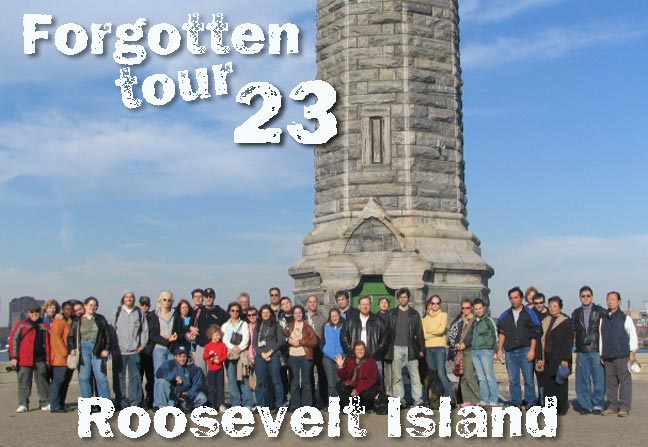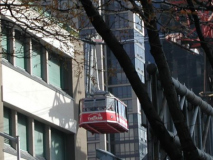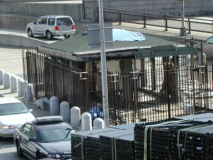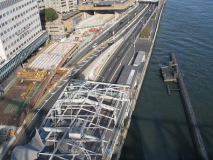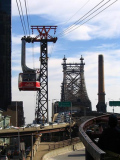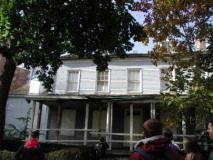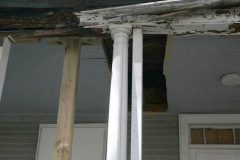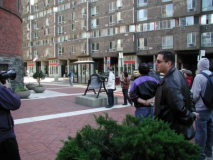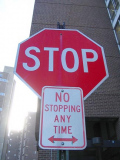37 Forgotten fans turned out on a 65-degree November Sunday for ForgottenTour 23 in Roosevelt Island. Unlike last time at South Street Seaport when we were besieged by detours and transit delays, things got off on time and everyone was treated to fine weather and plenty of historic buildings and ruins…
Many Forgotteners had never ridden on the Roosevelt Island Tram, built in 1976 soon after the island’s residential community was begun. photo: Leo Yau
The last remaning trolley kiosk at the Queensboro Bridge appears to be in the midst of dismantling. But fear not, as we’ll see, another one is nearby. photo: Leo Yau
Incoming tram and FDR Drive. What is that structure at the bottom of the picture? photos: Vidiot

We’re getting across faster than they are. photo: Vidiot
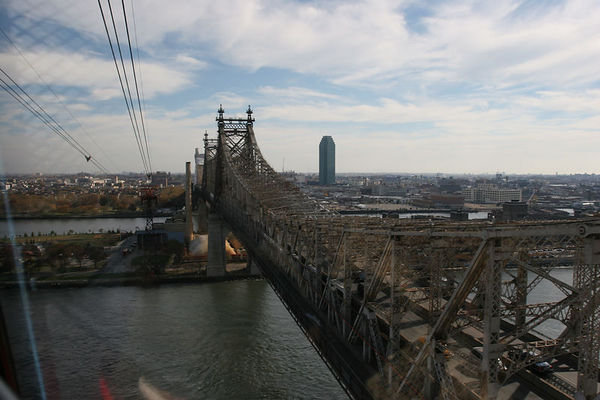
No other ride in the NYC transit system can beat the Roosevelt Island tram for views. The cost, $2 a ride, is the same as the subways and buses, but the ride is only 5 minutes long. Effectively, you’re paying for the view. photo: Steve Garza
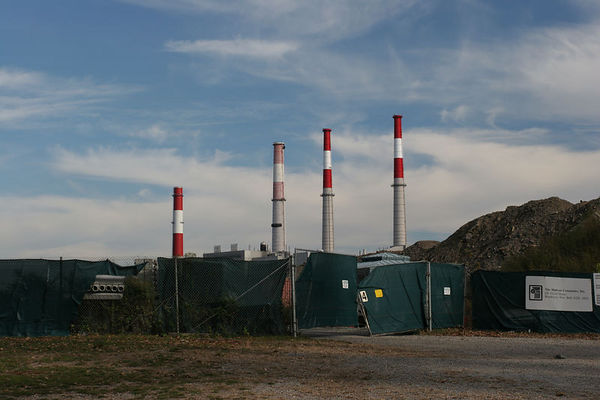
Behind this barrier near the tram terminal on Roosevelt Island you can barely see another Queensboro Bridge trolley entrance. For the past few years, it had been serving as the main entrance at the Brooklyn Children’s Museum; after the museum began a multimillion-dollar restoration, the kiosk was moved here, where it will be part of a landscaped park adjacent to the tram. The smokestacks of Big Allis, the massive power plant, are in the background. photo: Steve Garza
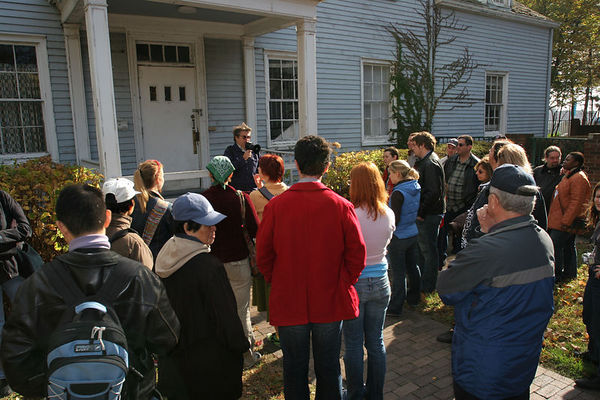
Your webmaster briefly gives the history of Blackwell House, built in 1794 by the first prominent family to reside on the island. photo: Steve Garza
Blackwell House is crumbling and is in need of a lot of repair. photos: Leo Yau (left), Steve Garza
Main Street’s unusual residential buildings, by Philip Johnson and John Burgee. Sidewalks are covered by the buildings, which loom right next to the street. photo: Leo Yau RIGHT: Traffic regulations can be confusing on Roosevelt Island. photo: Vidiot
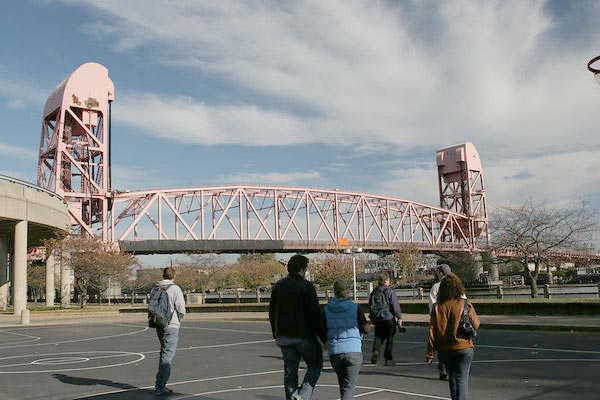
Roosevelt Island was home to almshouses, prisons and sanitariums for most of its modern history. There has never been a bridge, nor has one ever been proposed, between the island and the rest of Manhattan; the only means of entrance was by ferry and via an elevator from the trolley on the Queensboro Bridge until the mid-1950s, when this lift bridge was constructed between then–Welfare Island and Long Island City, Queens. photo: Steve Garza
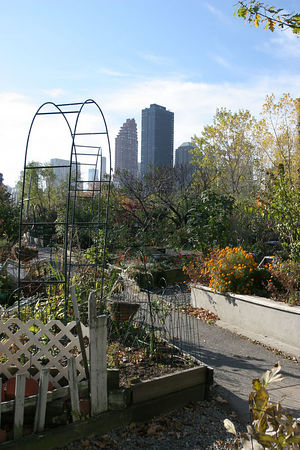
Roosevelt Island residents maintain a large private garden north of “downtown.” photo: Steve Garza

Fall shadows make interesting patterns on the east side driveway. photo: Caren Lissner
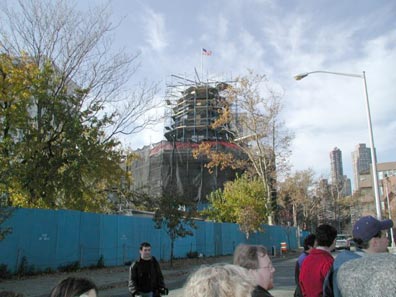
The structure known as “The Octagon” is all that remains of the island’s first insane asylum. Charles Dickens decried its conditions and Nellie Bly feigned mental illness to gain admission and report from within. It is being restored as a pricey condo development, and the Octagon’s 1890s-era dome is being restored. photo: Leo Yau
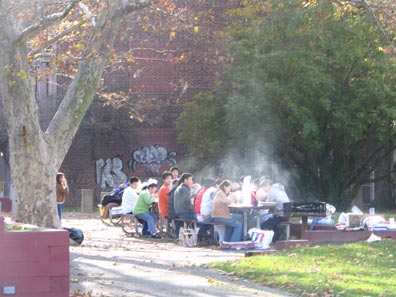
Lighthouse Park, at the island’s northern end, is a popular venue for picnics. photo: Caren Lissner
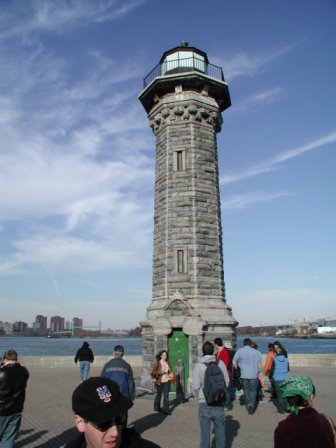
The lighthouse at the island’s northern end was built in 1872 by James Renwick Jr., who also built the Smallpox Hospital near the Island’s southern end.photo: Leo Yau

Tom Otterness, quickly becoming NYC’s go-to sculptor, has an installation entitled The Marriage of Commerce and Real Estate midway on the island’s western end. photo: Vidiot
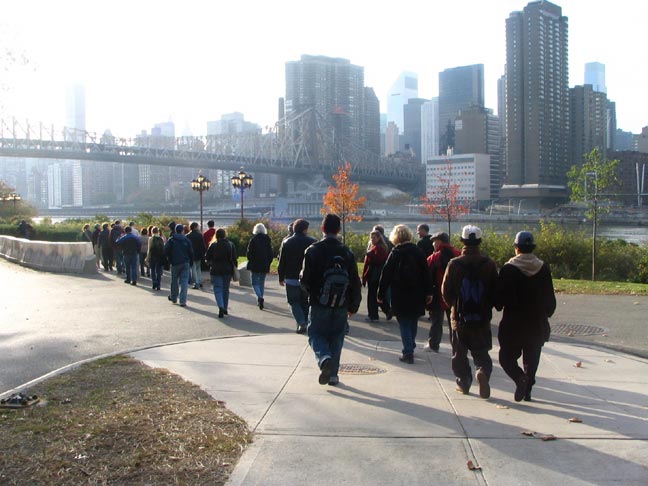
Another ForgottenTour in the books. photo: Caren Lissner
More on ROOSEVELT ISLAND; previous FORGOTTENTOURS
PHOTOSETS:
Steve Garza
Valerie Goodman
Vidiot
Leo Yau

